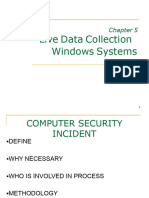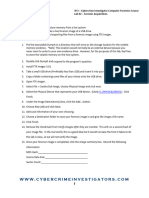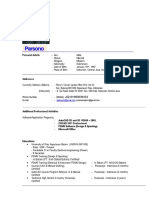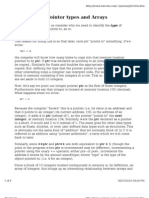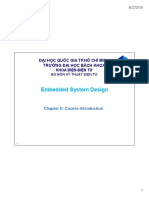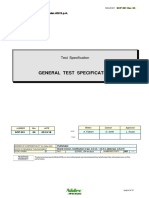0% found this document useful (0 votes)
31 views8 pagesBulk Extractor Linux Guide
This document outlines the procedures for using Bulk Extractor, a command-line digital forensics tool, in a Linux environment to extract data features from a forensic image file. The examination of the image file terry-work-usb-2009-12-11.E01 revealed various data types, including email addresses and credit card numbers, with results stored in an output directory. The report emphasizes the tool's efficiency in quickly identifying embedded data, suggesting further analysis is needed to understand the context of the findings.
Uploaded by
perezraprap15Copyright
© © All Rights Reserved
We take content rights seriously. If you suspect this is your content, claim it here.
Available Formats
Download as PDF, TXT or read online on Scribd
0% found this document useful (0 votes)
31 views8 pagesBulk Extractor Linux Guide
This document outlines the procedures for using Bulk Extractor, a command-line digital forensics tool, in a Linux environment to extract data features from a forensic image file. The examination of the image file terry-work-usb-2009-12-11.E01 revealed various data types, including email addresses and credit card numbers, with results stored in an output directory. The report emphasizes the tool's efficiency in quickly identifying embedded data, suggesting further analysis is needed to understand the context of the findings.
Uploaded by
perezraprap15Copyright
© © All Rights Reserved
We take content rights seriously. If you suspect this is your content, claim it here.
Available Formats
Download as PDF, TXT or read online on Scribd
/ 8



































